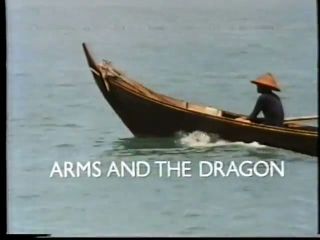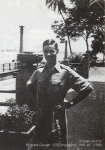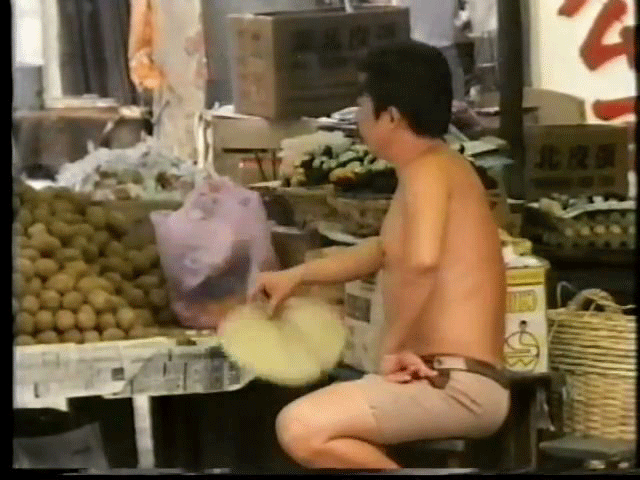Location Scouting in “SOE: Arms and The Dragon” (1984)
Title of film: SOE: Arms and The Dragon
Produced by Christopher Riley (BBC)
Year of Release: 1984
Synopsis:
A BBC documentary about British special ops unit SOE (Special Operations Executive) and its exploits in Southeast Asia. SOE was formed in July 1940 to develop and maintain clandestine networks in enemy occupied territory in the second World War. Its initial objective was Europe, but with the Japanese becoming a threat to the British, Dutch and French colonies in Asia, SOE expanded its operations and established two other missions in the Far East — Delhi-based ‘India Mission’ and Singapore-based ‘Orient Mission’. This documentary, released in 1984, presents interviews with SOE veterans as they recall the various special missions they had conducted and the people they had worked with when they infiltrated back into Malaya and Singapore in 1943 and 1944 — the MPAJA, Malay volunteers and KMT agents.
…
The Film Locations:
1. Former 101 Special Training School (101 STS), Tanjung Balai, Jurong River.
In 1941, when the Japanese military began its offensive in Southeast Asia, SOE Orient Mission decided to set up 101 Special Training School in Singapore (at Tanjung Balai, at the mouth of Jurong River) to prepare stay-behind teams in parts of the British Empire that might be conquered by the enemy. The school was housed in a large Art-Deco style bungalow, formerly the private estate of an Armenian millionaire. It was in a secluded and relatively inaccessible corner of the Singapore island, thus ideal for a secretive espionage training school.
Those stay-behind teams trained by 101 STS would then be in place across Southeast Asia to begin the work of relaying intelligence to the British armed forces, of executing acts of sabotage, and of recruiting indigenous people willing to take part in operations against the occupying forces. In the final days of the Japanese’s offensive in Malaya (December 1941), the school also trained 165 Malayan Chinese communists to prepare them for anti-Japanese guerilla warfare in Malaya. They would later form the nucleus of the Malayan People’s Anti-Japanese Army (MPAJA).
When the Japanese conquered Singapore in February 1942, the school was abandoned. After the war, in December 1948, the bungalow became South Winds Hotel. It was later acquired by Mr. Lee Kong Chian, a Hokkien philanthropist and rubber merchant. In 1951, Mr. Lee offered the bungalow for use by the Government. It became the home and rehabilitation centre of the Singapore Anti-Tuberculosis Association for incurable tuberculosis patients in 1954. Subsequently, the centre was closed and the site was taken over by the Government during the development of Jurong Industrial Estate in the 1960s.
.

Film-still from the documentary. Aerial view of 101 STS in a huge bungalow, situated at Tanjung Balai, a cape at the mouth of the Jurong River.
.

Film-still from the documentary. The facade of the bungalow facing the sea.
.

Film-still from the documentary. The interior of the bungalow.
..
In fact, the three film-stills presented above were cropped copies of photographs that were taken at 101 STS. I found the “un-cropped” versions of the photos in Richard Gough’s book “SOE Singapore, 1941-42″(1st published 1985).
The name ‘Tanjung Balai’ does not exist on maps or street directories of Singapore or Jurong today. (‘Tanjung Balai’ is more acquainted with a place in the Karimun Islands, Riau, Indonesia.) The terrain of Tanjung Balai still remains today, although the cape is extended further outwards at the mouth of the Jurong River after land reclamation. Today, the cape is part of the Jurong Port and is close to where Jurong Fishery Port and many factories and industrial plants are situated.
..
I had wanted to visit Tanjung Balai and retrace the grounds of the 101 STS bungalow but there is restricted access to the Jurong Port nowadays. So, I was only able to explore as far as the end of Jalan Tepong and its vicinity (Jalan Tepong could have been the tail end of the original minor road that will lead one from the main Jurong Road to the 101 STS compounds). Here are some photos from the ‘expedition’:
…
2. Former Cathay Building

Film-still from the documentary. The SOE Orient Mission functioned out of an office in the former Cathay Building.
…
3. Downtown Singapore
Other than photographs of places associated with SOE Orient Mission, the documentary also included what are termed as ‘B-rolls’ — supplemental footage intercut with the main contents and interviews. The ‘B-rolls’ included shots of downtown Singapore in the 1980s…

Elgin Bridge, Singapore River.
.

Kampong Glam, near the Sultan’s Istana (now the Singapore Malay Heritage Centre). Sultan Mosque in the background.
.

Probably Kreta Ayer, Chinatown.
.

Probably one of the back alleys in Chinatown.
.

The Parliament House Annex Building (formerly a courthouse, now a restaurant).
.

The Supreme Court (in the future, part of the National Art Gallery).
..
Besides buildings and places, the B-rolls in the documentary also included intriguing shots of people waiting, resting, smoking, fanning themselves and contemplating. The audience may get the (wrong) impression that Singapore city is laid-back and residents here are unhurried as they go about their daily business….. Well, maybe it was that laid-back in the 80s…
………..





























